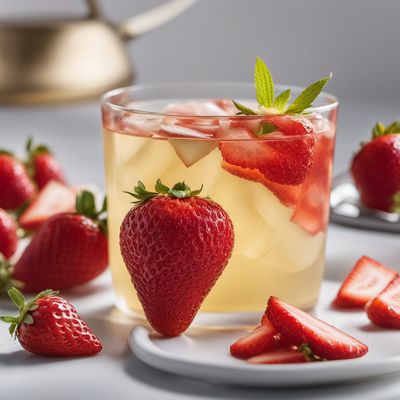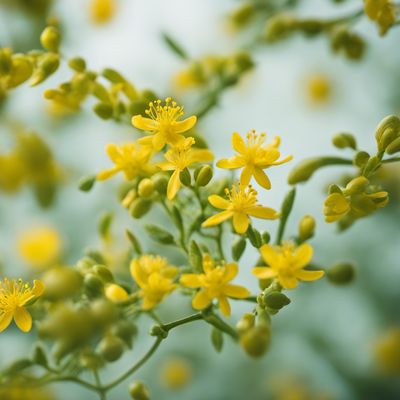
Ingredient
Plantain infusion leaves
The Versatile Herb
Plantain infusion leaves have a mild, earthy flavor with subtle hints of bitterness. They are typically dried and used to make herbal teas or infusions. The leaves are long and lance-shaped, with prominent veins and a dark green color. When brewed, they release a soothing aroma and produce a pale golden infusion.
Origins and history
Plantain infusion leaves have a rich history and are native to Europe and Asia. They have been used for centuries in traditional medicine for their various health benefits. In culinary applications, plantain infusion leaves are commonly used in herbal teas, soups, stews, and as a flavoring agent in baked goods.
Nutritional information
Plantain infusion leaves are a good source of vitamins A and C, as well as minerals like calcium and potassium. They also contain antioxidants and have anti-inflammatory properties. However, it is important to note that individual health benefits may vary, and consulting a healthcare professional is recommended.
Allergens
There are no known allergens associated with plantain infusion leaves.
How to select
When selecting plantain infusion leaves, look for dried leaves that are whole and intact. Avoid leaves that are discolored, moldy, or have a musty smell. Organic or wildcrafted options are preferable to ensure the highest quality.
Storage recommendations
To preserve the freshness and flavor of plantain infusion leaves, store them in an airtight container in a cool, dry place away from direct sunlight. Proper storage will help retain their potency and aroma for an extended period.
How to produce
Plantain infusion leaves can be easily grown in home gardens or containers. They thrive in well-drained soil and prefer partial shade. To propagate, plant the seeds or transplant young seedlings into the desired location. Regular watering and occasional pruning will help maintain healthy plants.
Preparation tips
To prepare plantain infusion leaves, simply steep a handful of dried leaves in hot water for 5-10 minutes. Strain and enjoy the herbal tea on its own or add honey and lemon for added flavor. The leaves can also be used as a seasoning in soups, stews, or infused into oils for culinary applications.
Culinary uses
Plantain infusion leaves are commonly used in herbal teas, particularly in European and Asian cuisines. They can also be added to soups, stews, or used as a seasoning in various dishes for a mild, earthy flavor.
Availability
Plantain infusion leaves are commonly available in health food stores, specialty tea shops, and online retailers that offer herbal products. They can also be found in some grocery stores or supermarkets with a well-stocked tea section.
More ingredients from this category » Browse all

Gymnema infusion leaves
The Sweet-Suppressing Herb

Currant (black, red and white) infusion leaves
Infusion Leaves: A Burst of Flavor and Health

Tansy infusion leaves
The Herbal Elixir: Tansy Infusion Leaves

Centaury infusion leaves
The Healing Herb

Strawberry infusion leaves
The Fragrant Essence of Strawberry

Chiretta infusion leaves
The Bitter Elixir: Unveiling the Power of Chiretta Infusion Leaves

Horse-chestnut infusion leaves
The Healing Power of Horse-Chestnut Infusion Leaves

Eucalyptus infusion leaves
Refreshing Eucalyptus: Aromatic Leaves for Infusions

Ribwort plantain infusion leaves
The Healing Herb: Harnessing the Power of Ribwort Plantain

Alpine ladies mantle infusion leaves
The Enchanting Elixir: Unveiling the Magic of Alpine Ladies Mantle Infusion Leaves

St. John´s Wort infusion leaves
"Nature's Sunshine: Exploring the Healing Powers of St. John's Wort Infusion Leaves"

Birch infusion leaves
The Healing Elixir: Birch Infusion Leaves